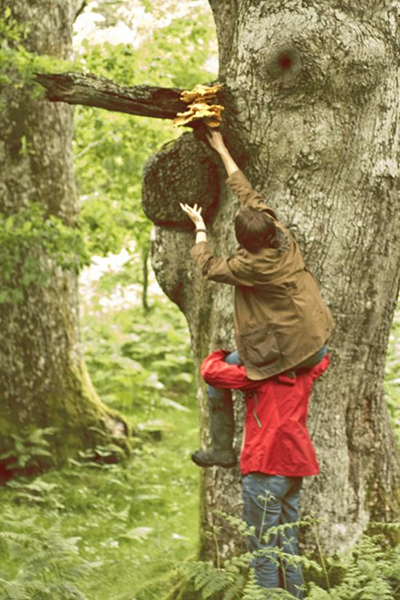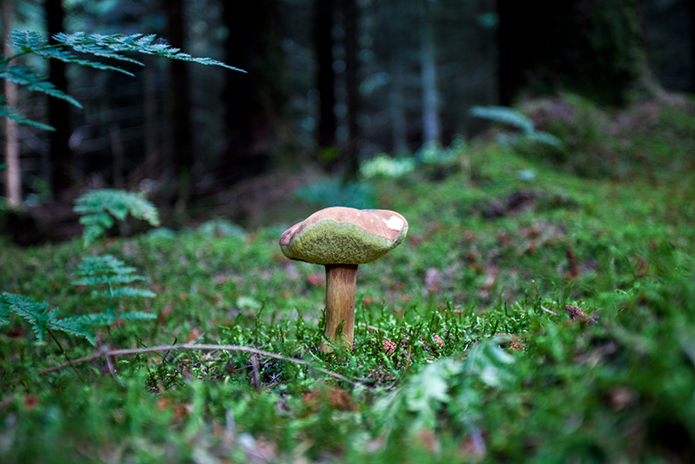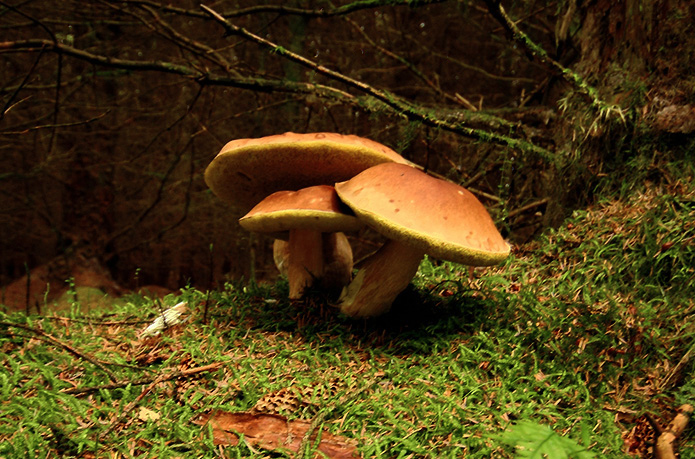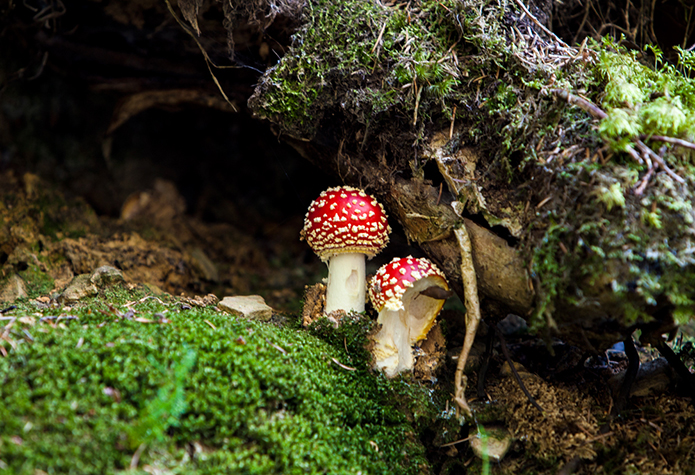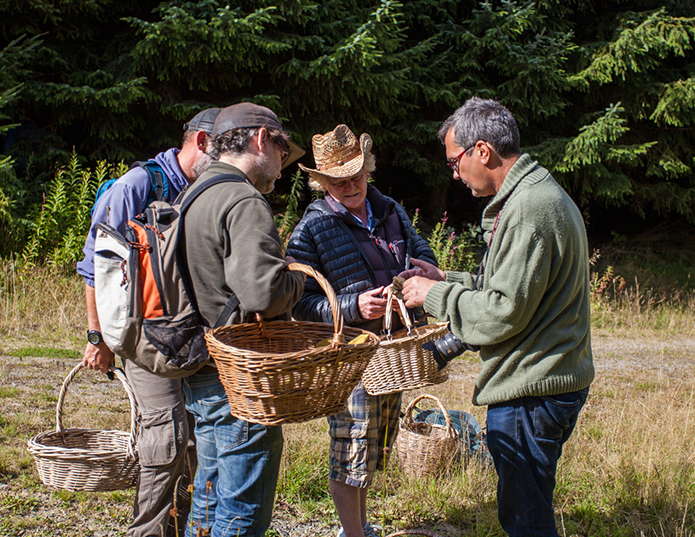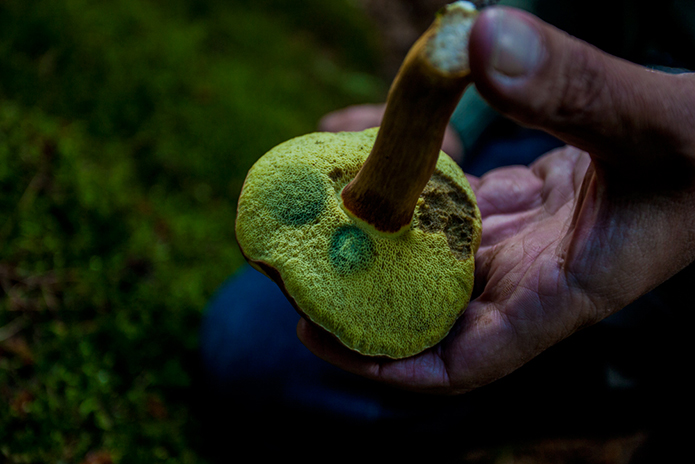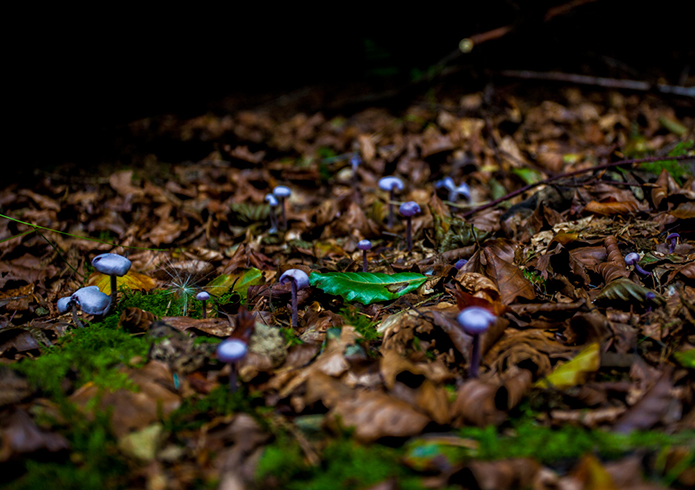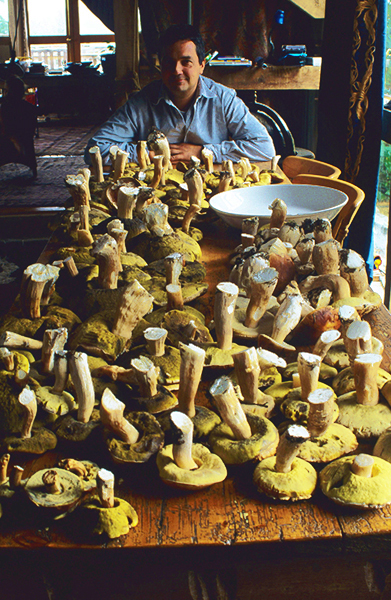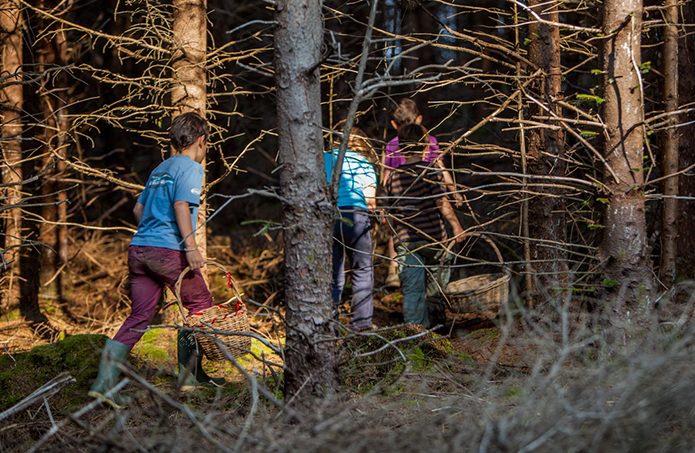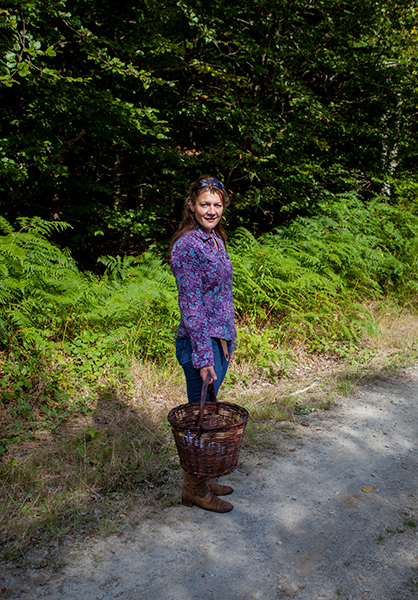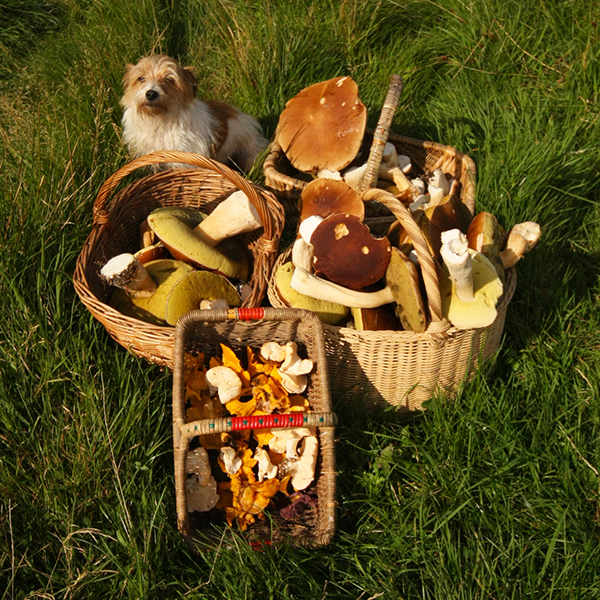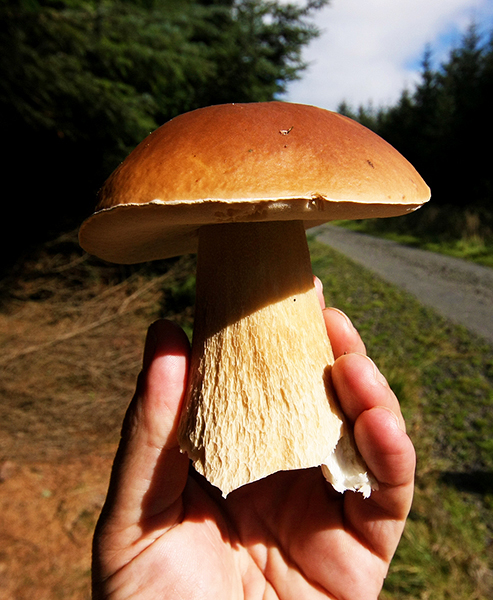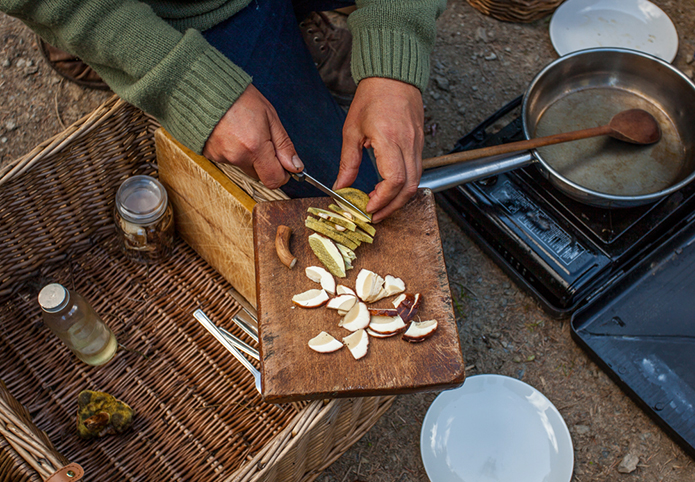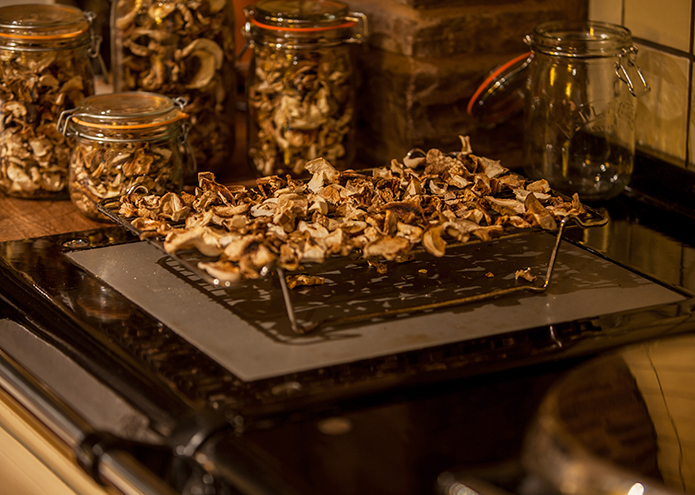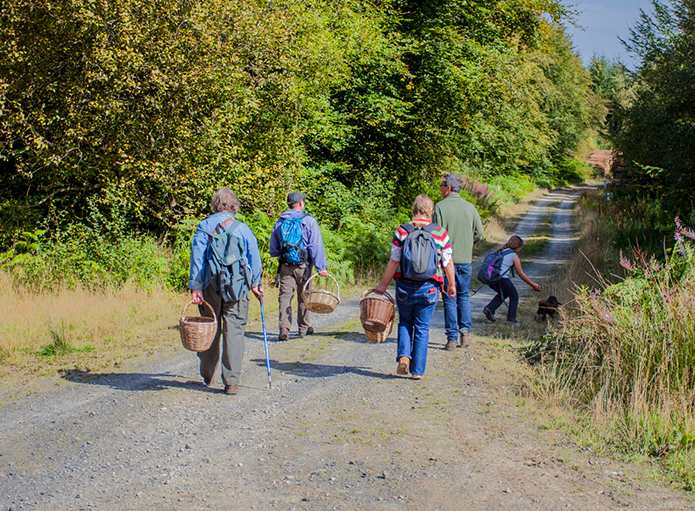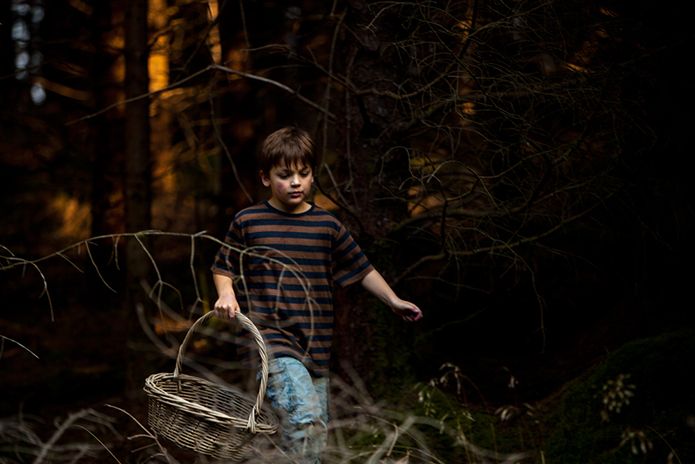
The British just don’t understand wild mushrooms. If you mention the topic most people instantly think of deadly ‘toadstools’ and autumn – probably in that order. Any personal experience of harvesting will almost certainly be confined to fond memories of picking field mushrooms on idyllic childhood holidays.
Mushroom myopia
Such impressions seem imbedded in the British psyche. Almost everyone is convinced fungal foraging is effectively a seasonal version of Russian roulette. Yet ironically it is the handful of people who are brave enough to pick field mushrooms that are most likely to have a nasty experience. The braver souls who harvest strange-looking woodland species are far less likely to make a mistake.
This ignorance is nothing new. As a nation we have virtually no tradition of mushroom eating, let alone foraging. This is puzzling for we are separated from the fungiphile French by only a few miles of sea. And the mushroom-fanatical nations of Poland, Germany, Italy and Catalonia lie within a couple of hours’ flight.
Nor can it be down to a lack of mushrooms. All the most gastronomically-prized mushrooms, from morels and truffles to chanterelles and porcini grow here in abundance. Our mild, damp, conditions are actually better than the more arid, hotter and colder weather found across most of the Continent. And contrary to popular belief, delicious mushrooms can be found around the year.
No, our cultural distrust is probably rooted in a combination of a high-level of private land ownership and an early Industrial Revolution, both of which cut most people’s links with the land, These are significant because until very recently there were no field guides, so knowledge relied on being shown the good from the bad by an expert – and on the Continent most people still learn from their grandparents or a canny neighbour.
While it is perfectly possible to safely teach oneself the art of fungal foraging, there is a lot to be said for starting with someone who knows what they are doing.
Not only can an experienced forager show how to identify edible species with confidence, they will guide you to locally abundant species. For example there is no point looking for Welsh morels in the autumn – they grow in alkaline soil in spring – but porcini are one of the most abundant mushrooms in the Principality’s conifer woods every October.
Toxicity
Naturally one should always be careful and use common sense when gathering mushrooms. Last year the National Poisons Unit reported several hundred ‘poisonings’, but this is highly misleading. Almost all were due to yellow stainers. These close relatives of cultivated- and field mushrooms look almost identical to their edible counterparts, but get their name from discolouring yellow when cut or bruised. Cases of mistaken identity are common, but the results are never more than a brief gastric upset. This is really an allergic reaction rather than a poisoning and even then only half the population is susceptible.
That said, there are about 50 native species which can kill in theory and some undoubtedly do in practice. Two people have died in England over the past five years after eating death caps, for example. There have also been some high-profile ‘near misses’ (Horse Whisperer author Nicholas Evans and three others had a very close call after eating deadly webcaps in 2008).
But these incidents should be put in context. Apart from an accidental overdose by someone experimenting with the hallucinogenic properties of fly agaric in the 1970s, over the past century there have been no other adult fatalities in Britain.
While several dozen people die around the world each year, a recent study by Copenhagen University shows all fatalities boil down to five species (death cap; destroying angel; false morel; deadly- and fool’s webcap).
Even within this group, it is the death cap which accounts for around 90% of incidents, mainly because it is relatively abundant and just half a mushroom can be fatal. Set against this there are around 100 highly-edible species and most look nothing like the ‘deadly five’.
The reality is that far from being as dangerous as base jumping or free-style rock-climbing, given a little common sense, mushroom hunting is easy and safe. A good guide book is all that’s necessary. There are now scores of these jostling for space on bookshop shelves. I am entirely self-taught and in 20 years have eaten 50 native species with never so much as indigestion. I also lead guided forays and despite having taken out well over 1,000 guests none of these has made a mistake either.
The nearest brush with an accident I’ve had was a couple who went home to split a pasta dish garnished with over a kilo of highly edible wild mushrooms smothered in cream and Parmesan – they simply suffered from naked greed and ate too much! Wild fungi are usually much richer than their cultivated cousins and so generally should be used more as a flavouring rather than a staple ingredient.
Why forage?
There are very good reasons to take up foraging. Firstly, it is much the easiest way to tap into a world of fantastic tastes and textures. True, a few are sometimes available in specialist delicatessens, but you will search in vain for a fresh chicken of the woods, cauliflower or parasol. The handful which can be bought (usually dried) will also be expensive.
I once saw fresh porcini at £120 a kilo in London. The following week I visited a Welsh spinney to fill the back of an estate car with 50 kilos in 20 minutes. I don’t sell mushrooms, but within hours had filled my store cupboard with a dozen huge jars, each containing a kilo of dried porcini – enough to keep me in supplies for two years and worth well over £1,000 at shop prices.
But it’s not about saving money. Much more importantly, a foray is a great way to add zest to a country walk. You might come back empty handed, but as with bird watching, fishing or rough shooting, just searching for something opens your eyes to far, far, more than the target species.
It is also a wonderful natural treasure hunt for the whole family. Most children dislike eating mushrooms, but thanks to their keen eyesight, closeness to the ground and ability to ferret into undergrowth, they soon learn they are better at finding fungal jewels.
Where to begin?
So what are the basic guidelines to foraying? Firstly, use a knife to cut the stalk. Some books suggest this reduces damage to the mycelium. This is unlikely, but it certainly reduces the dirt which will have to be cleaned off later. Also carry your finds in a basket or cotton bag to ensure a good air flow (mushrooms start to sweat in a plastic bag which leads to rapid decay).
Also, avoid filling your basket with everything you find. Only some 100 of Britain’s 10,000-odd species of visible fungi are edible, thus random harvesting just leads to a basket brimming with inedible mushrooms. Instead only pick when you are moderately sure of identity. This also saves a huge amount of time when you try to identify ‘little brown jobs’ from the encyclopaedia at home.
Back in the kitchen speed is of the essence. Mushrooms can deteriorate very quickly, so the first thing is to prop open the guidebook while sorting out any suspect or substandard specimens.
Clean the rest (never wash, but brush, pare and wipe off any dirt or insect damage). Most fresh mushrooms have a limited shelf life, so cook the best specimens immediately and as a general rule stick to simple recipes such as soups, risottos or quiches (the last thing you want to do is mask the superb flavours).
Preservation
There are many ways to store a glut. Perhaps the easiest is to cook up one huge dish and freeze anything you don’t eat immediately. Others – such as porcini – are arguably better dried than fresh (slice thinly, spread on a wire rack and place above a mild heat source such as a radiator, stove or airing cupboard). More aromatic species such as chanterelles can be ‘potted’ by simmering lightly in an equal quantity of butter, chopping everything up in a food processor and sealing in sterilised jars. These will keep for several weeks in the fridge.
A note of caution
Finally, remember fungi foraging is very dangerous, although not in the way that most people imagine. You will not make any mistakes. You are British, so will throw away countless highly-edible species solely because you aren’t absolutely certain of their identity. No the risk is that after your first successful expedition you will be well and truly hooked. Mushroom collecting is one of the most addictive pastimes known to man and an autumn stroll will never be the same again.
Daniel Butler lives on a smallholding from where has been leading edible mushroom safaris since 1997. When not foraging for wild foods, he is an environmental writer and the author of Fungi Forays, A Mushroom Is a Misunderstood Rose and publishes a free mushroom e-newsletter: www.fungiforays.co.uk.

